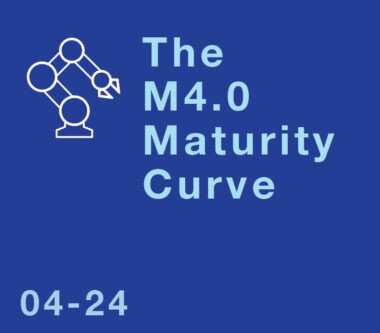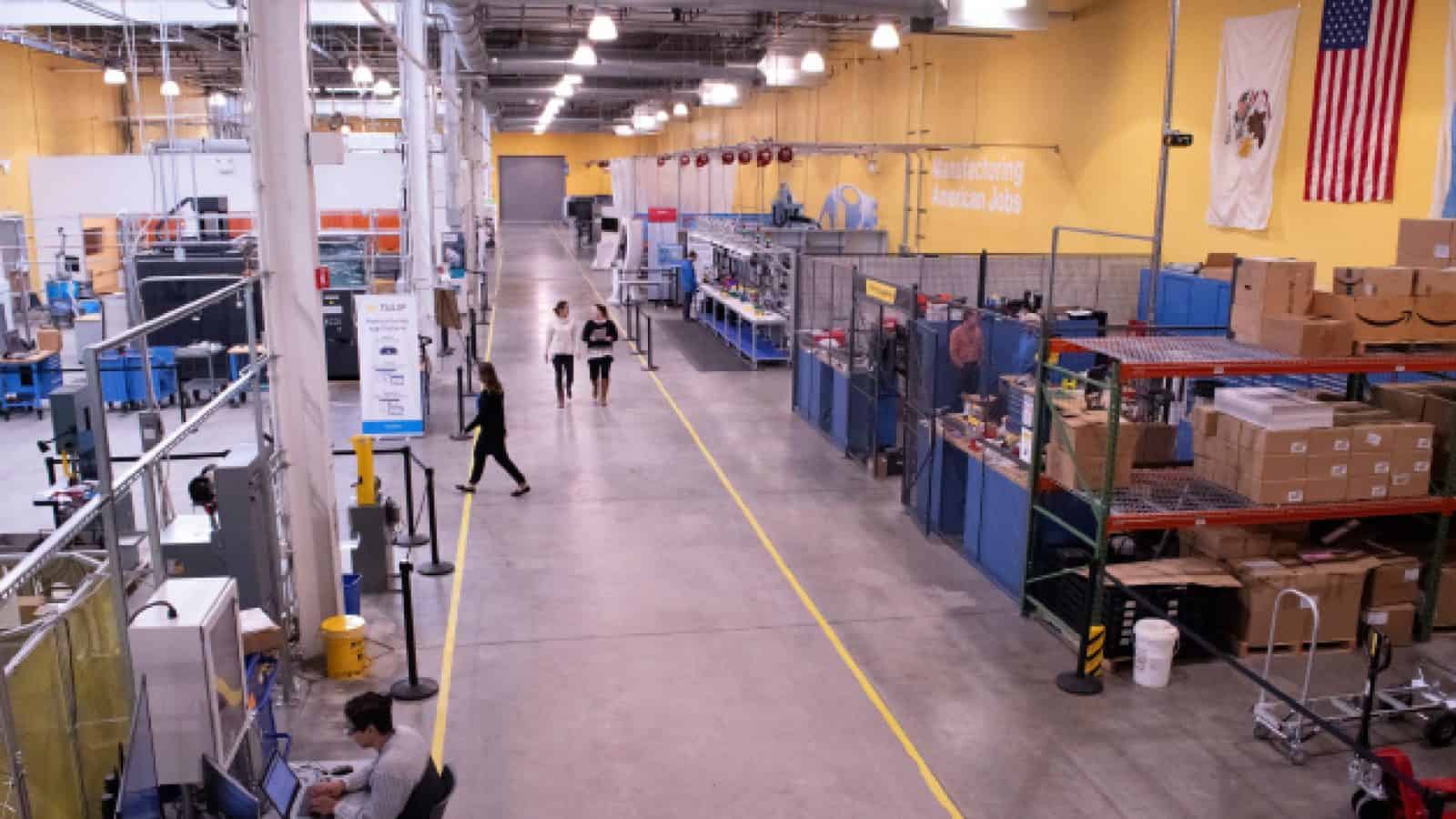The Road to Digitalization: Evaluating Readiness for Digital Transformation

Manufacturers should employ a comprehensive assessment framework to identify strategic actions required to achieve a higher level of digital maturity.

TAKEAWAYS:
● Manufacturers that stand still run the risk of falling behind.
● The insights are in the data, fueling the continuous improvement cycle, where each step reveals new opportunities for innovation and optimization.
● Measuring digital maturity is the catalyst for the transformative process.
The fourth industrial revolution has driven the manufacturing industry to an inflection point where technological advancements are no longer just accelerators for growth but fundamental for organizational survival. This digital shift is not merely about adopting new technologies—rather it is about realizing a profound change in how organizations operate, innovate, and deliver value. As leadership focuses on finding a strategic balance between technological advancements to realize quick, tangible benefits while maintaining the flexibility to scale operations in an increasingly complex environment, one thing remains constant—namely, the insights are in the data and the ability to assess an organization’s preparedness for digitalization is paramount for success.
Redefining Readiness: A Fresh Perspective to Drive Transformation Differently
Of the many manufacturers that have started their digital transformation journey, relatively few have realized the value they aimed to achieve, often because they are simply starting in the wrong place. Building the future factory involves visionary leadership and practicality, beyond just adopting new technologies for quick changes. Leaders must envision their organization’s future, not by predicting technologies, but by understanding industry directions, their starting point, and the competitive path forward. This intersection of industry trends, current state, and defined organizational objectives, gives birth to an organization’s unique digitalization strategy—underscoring digital readiness and representing a holistic approach that integrates the technological, cultural, and operational facets of an organization to derive true digital value.
A McKinsey & Company study highlights the significance of digital readiness and understanding one’s digital maturity and indicates that companies that excel in their digital transformation efforts are twice as likely to report double-digit growth rates compared to their less-prepared counterparts (McKinsey 2020). But, with their enthusiasm for technology adoption and their emphasis on strategic planning, many manufacturers overlook assessing digital maturity and the readiness of current systems to integrate with new technologies.
Digital maturity denotes the sophistication with which an organization incorporates digital technologies and methodologies across its operational frameworks, customer engagement strategies, and innovation initiatives. This concept evaluates several dimensions, including the automation level and digitization depth of core business workflows, the strategic application of data analytics for enhanced decision-making processes, and the comprehensive integration of advanced digital technologies such as robotics, artificial intelligence (AI), and the Internet of Things (IoT) within the enterprise ecosystem.
“A digitally mature enterprise can be characterized by its advanced integration of technology across all facets of its operations.”
Through this rigorous exercise, leaders can identify the most critical technologies and processes that will provide the quick win, tackle the most prominent operational deficits, drive alignment of their operational goals, and serve as a foundation for future scalability. Using this information as a baseline, you can shape your digital transformation strategy from a simple shopping list of the latest technologies and transform it into a more comprehensive road map that addresses the gaps and leverages the existing strengths of existing operations.
Digital Mastery: Key Indicators of an Advanced Organization
In its 2023 Manufacturing Horizon Report, CRB revealed that companies effectively integrating the right technologies with their operational dynamics have experienced a surge in productivity by an astounding 27 percent, and a subsequent reduction in operational costs by nearly 19 percent. A study by Deloitte shows companies at the highest level of digital maturity are 26 percent more profitable than their industry averages.
A digitally mature enterprise can be characterized by its advanced integration of technology across all facets of its operations. From strategic decision-making to day-to-day processes, such organizations leverage digital tools and platforms to enhance productivity, foster innovation, and deliver superior customer experiences. Central to their operational model is the use of data analytics and AI to drive business insights, ensuring agility and responsiveness to market changes while simultaneously prioritizing cybersecurity and data privacy, embedding these considerations into their technology architecture and everyday business practices.
But digital maturity is not just about technology adoption, it’s about transforming organizational behaviors and business models so they can thrive in the digital age (Deloitte 2020; McKinsey & Company 2021). In these organizations, essential operations are no longer confined to isolated departmental units—rather they are developed and overseen by interdisciplinary, production-focused teams with well-defined performance standards and business objectives. The most technologically advanced organizations possess the infrastructure to facilitate comprehensive platform-based procedures, bolstered by self-sufficient resources at the forefront. These cross-functional teams are at the core of cultivating the next generation of manufacturing culture: they consistently provide scalable, technology-led solutions, products, or client experiences, fueled by a continuous cycle of learning and innovation that stimulates regular advancements and enabling them to adapt swiftly to evolving client expectations. and driving their competitive edge.
From Traditional to Transformed: The Path to Digital Maturity in Manufacturing
Navigating the intricate journey towards digital maturity requires a sophisticated understanding of the evolutionary stages that manufacturing entities must traverse. Leading industry consultants have highlighted delineated frameworks that categorize such progression within manufacturing environments. While each has their own interpretation, these stages, broadly outlined, transition from initial digital awareness, where the digital strategy is nascent and fragmented, through to a fully integrated digital ecosystem, characterized by advanced analytics, IoT implementation, and AI applications. This progression encapsulates a journey from foundational digital capabilities towards a transformative state, where digital technologies are leveraged not just for incremental improvements but are deeply embedded into the fabric of operational processes and strategic visions, driving innovation, efficiency, and competitive advantage in a connected, smart manufacturing landscape.
“Navigating the intricate journey towards digital maturity requires a sophisticated understanding of the evolutionary stages that manufacturing entities must traverse.”
Coupled with such widely recognized industry knowledge, our real-world experience has driven the creation of a digital maturity methodology that emphasizes a people-first, technology-enabled approach, focusing on the strategic deployment of technology to deliver real business value. By identifying areas for maturity enhancement within organizational and technological domains (OT/IT), we facilitate the transition towards a fully optimized manufacturing solution. Central to our process are six key technology pillars that support digital manufacturing advancements, employing an iterative transformation lifecycle that incorporates analysis and feedback after each phase to refine processes and improve data collection (Figure 1). This ensures a continuous loop of improvement and adaptation, aligning technology implementation with human insight and collaborative engagement.
Figure 1: The path to digital maturity

Metrics of Modernization: Maturity and Momentum
Quantifying an organization’s digital maturity involves a systematic approach. This approach includes evaluating the integration and effectiveness of existing digitization across all business units and providing leaders with a clear understanding of their current position in their digital transformation journey, while simultaneously outlining the path toward achieving higher levels of technological integration and operational efficiency. This multi-dimensional assessment includes an analysis of several key factors: digital strategy formulation, leadership commitment towards digital initiatives, operational agility for adopting new technologies, the level of client engagement through the digital ecosystem, and the empowerment of the workforce with digital tools and skills. This measurement not only benchmarks an organization’s current capabilities against industry standards and best practices, it also identifies gaps and areas for improvement, facilitating targeted investments in technology, processes, and workforce development, strategically allocating resources for digital growth. Ultimately, the measurement accelerates an organization’s transformation into future-proof, digitally mature enterprises that are more competitive, thereby fostering a culture of digital excellence that is adaptive in the rapidly evolving digital landscape.
While many recognize that the ability to measure maturity is a powerful catalyst for change, it can be challenging to successfully quantify relevant insights. From a broad perspective, effective metrics to provide granular insight into three specific dimensions of transformation:
Technology:
- Overall equipment effectiveness is a critical metric for measuring manufacturing efficiency, combining performance, availability, and quality.
- Percentage of connected assets: Quantify the scale of IoT implementation, the degree of automation, and the existing adoption of advanced technologies.
- Data capture rate: Measure the breadth of real-time data collection for analytics.
Process:
- Data-driven decision-making capabilities in production, planning and scheduling, inventory management, and integrated supply chain management. This includes examining lead times and cycle times to track gains in agility and responsiveness; evaluating inventory turnover ratio to measure supply chain optimization and risk reduction; and studying first-pass yield to track improvements in quality control aided by data analytics.
- Workflow optimization for efficiency and agility.
Organization:
- Leadership commitment to digital transformation and strategic alignment, including a digital skills index to evaluate workforce digital literacy.
- Cross-functional collaboration enabled by technology platforms that quantify cross-functional project success rates and collaboration effectiveness.
- Cybersecurity, data governance, and risk management protocols in place to expose vulnerabilities or inadequate practices, including cybersecurity Posture Assessment
Organizations can adopt various frameworks and/or maturity models to systematically evaluate and benchmark their digital progress against parameters, enabling a structured roadmap for digital advancement. We highlight several frameworks organizations could use for a structured assessment approach:
- Smart Industry Readiness Index (SIRI): EDB’s framework provides a rigorous 16-dimension assessment. The Prioritization Matrix (TIER) facilitates targeted action based on today’s state, impact to the bottom line, essential business objectives, and references to the broader community.
- Acatech Industrie 4.0 Maturity Index: This model uses a stage-based approach to help organizations chart their maturity progression and define their developmental trajectory.
- Digital Maturity Models (Deloitte, BCG, CESMII, etc.): These consultancy frameworks offer broader enterprise-level assessments, aiding strategic alignment.
In my experience, the journey to digital maturity demands an honest assessment of your organization’s current standing. By adopting any of the proven frameworks and critically analyzing the data, manufacturing leaders gain a diagnostic blueprint for targeted action. This process uncovers the specific investments in technology, process optimization, and workforce development that will yield the highest return, transforming the framework from a mere scorecard into an instrument of strategic change by creating the business case for your continuous improvement initiatives.
Charting the Course: Evaluating Progress Towards Digital Excellence
Given the dynamic ecosystem of the manufacturing industry—characterized by fluctuating demand, raw material availability, and geopolitical uncertainties—the ability to effectively scale a technology strategy and advance your digital maturity is tantamount to achieving operational agility and sustained growth. Scaling is not merely a replication of solutions that have demonstrated value in a small-scale setting; it is an intricately planned endeavor that aligns technology with business objectives, regulatory frameworks, and workforce capabilities. Contrary to popular belief, it does not merely refer to deploying more of the same technology across an enterprise. It involves understanding the contextual intricacies of each operational environment and adapting the foundational strategy to the idiosyncrasies accordingly.
“By strategically leveraging assessment frameworks and focusing on actionable insights, manufacturing leaders gain a powerful tool for continuous improvement.”
For instance, a mid-sized automotive supplier improved operations by using a digital maturity assessment, which identified a gap in data analytics. By investing in IoT sensors and cloud analytics, they reduced downtime by 15 percent, improved efficiency by 8 percent, and fostered a proactive maintenance culture. Similarly, a large food and beverage company enhanced its complex supply chain visibility and efficiency through a maturity assessment, adopting cloud and IoT technologies to improve delivery rates, reduce inventory costs, and ensure food safety. These examples underscore the value of data-driven decisions and targeted strategies in driving continuous improvement, innovation, and resilience against technological disruptions and evolving market demands, highlighting the importance of a culture of innovation integrated into operational practices.
This path toward digital maturity is an ongoing journey, not a single destination. The importance of understanding where to begin extends beyond the immediate advantages of implementing technology, nurturing a manufacturing sector that is both resilient and visionary. By strategically leveraging assessment frameworks and focusing on actionable insights, manufacturing leaders gain a powerful tool for continuous improvement. This approach equips organizations with the capability to adeptly confront the challenges and seize the opportunities that emerge in the digital era, driving their long-term competitiveness and adaptability, purposely and efficiently. The ultimate reward, however, lies not just in achieving a higher maturity score, but in building a manufacturing enterprise that will thrive in the dynamic industrial ecosystem.
About the author:

Holly Becker is director of Commercialization at ATS Applied Tech Systems, LLC.
